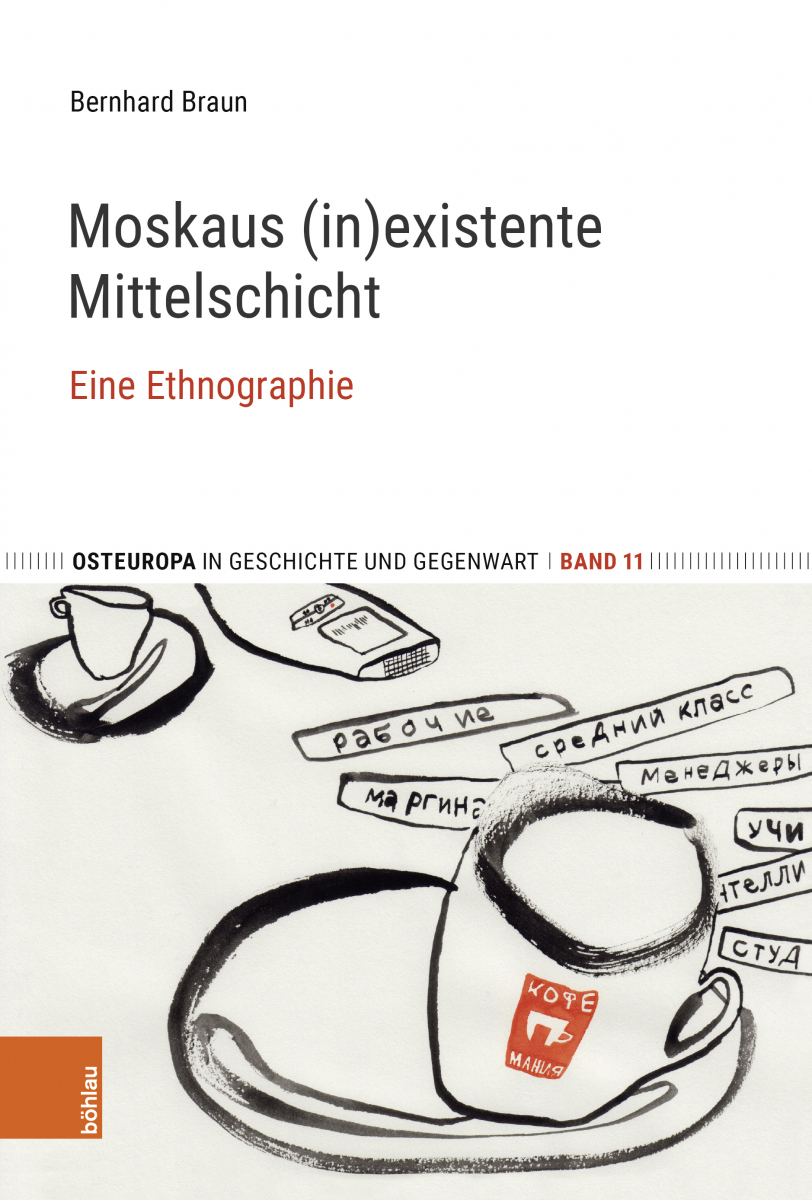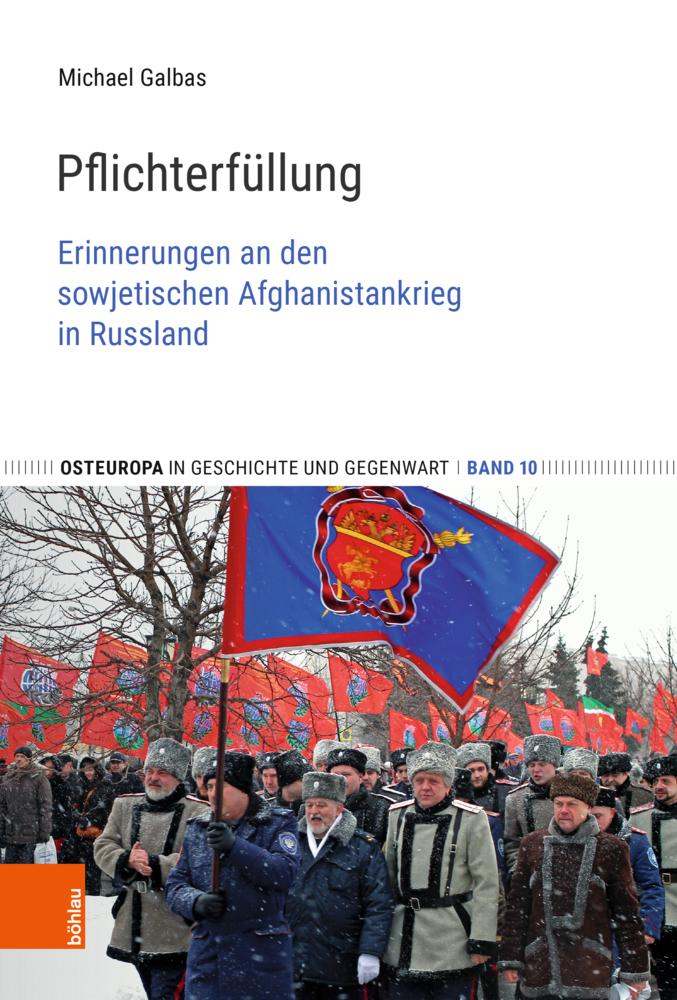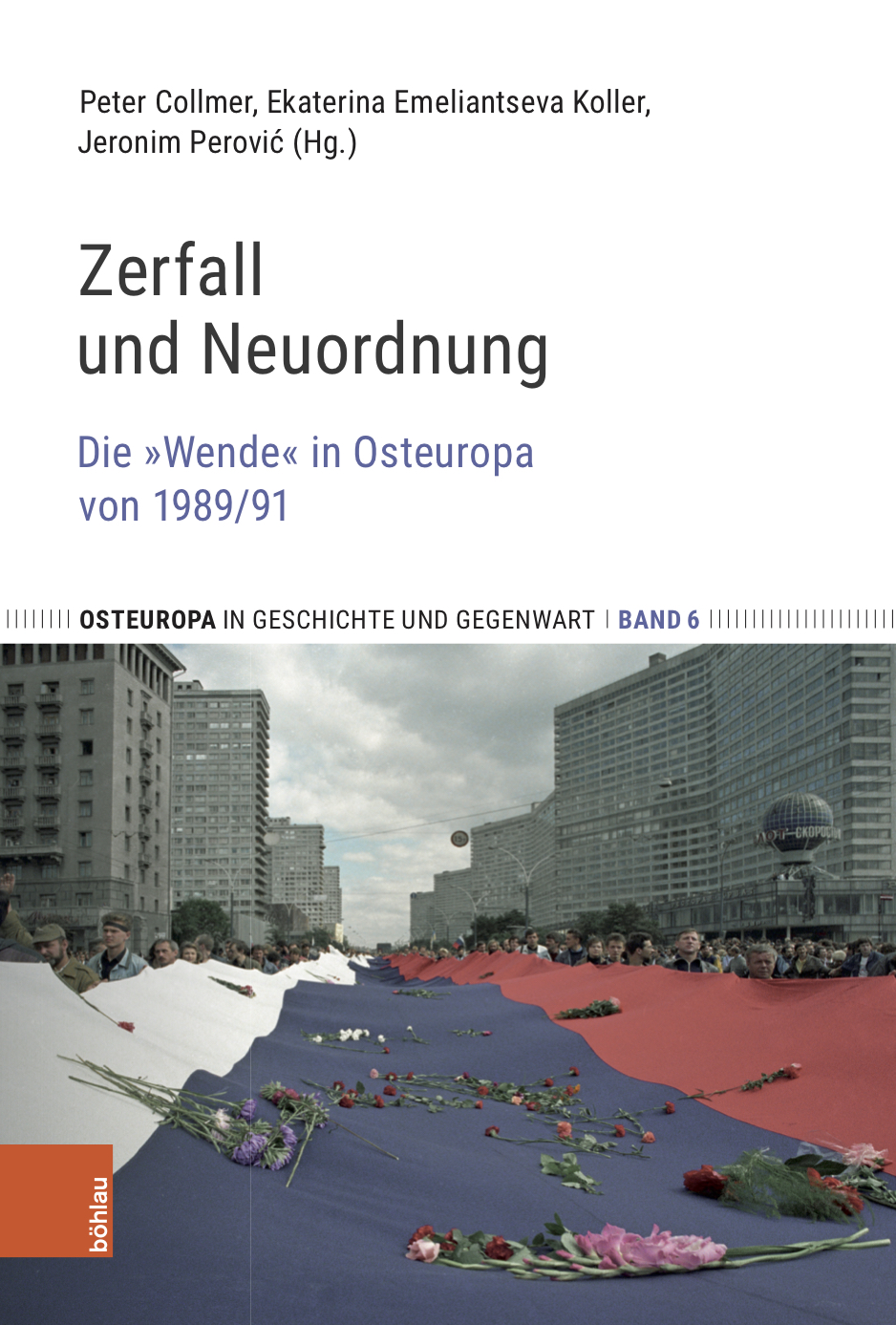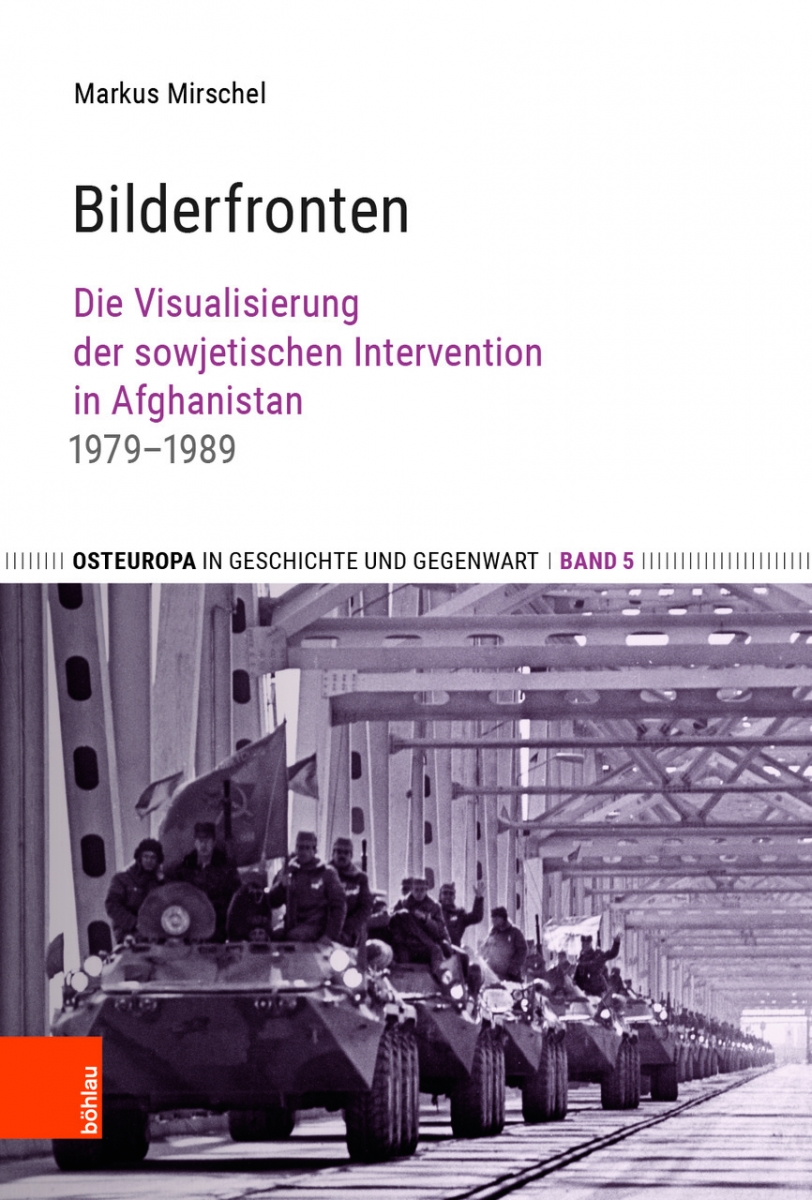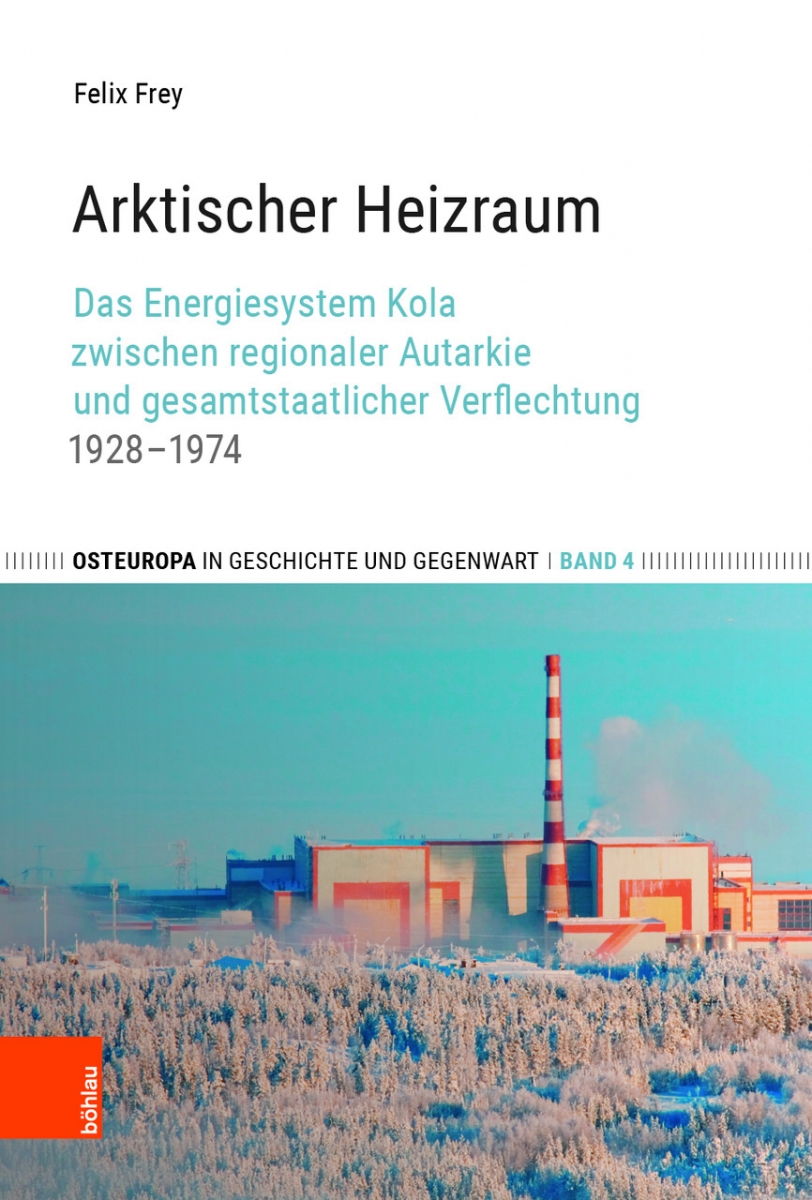CEES Book series - Osteuropa in Geschichte und Gegenwart
The new series Osteuropa in Geschichte und Gegenwart responds to a growing need for deep analysis of contemporary history and current events in the eastern part of Europe. Geographically, the region is broadly defined and chiefly comprises the formerly socialist Eastern Bloc countries, with a particular focus on Russia and the states of the former Soviet Union. The book series is interdisciplinary in scope and includes historical works as well as publications on current events focusing on political, social, economic and cultural topics.
The series is published by Böhlau Verlag, part of the Vandenhoeck & Ruprecht publishing group, and edited on behalf of the Center for Eastern European Studies (CEES) by Tanja Penter (University of Heidelberg), Jeronim Perović (University of Zurich), and Ulrich Schmid (University of St. Gallen).
Volume 12: The "Russkii Mir" Foundation
Alexander Meienberger: Die Stiftung „Russkij mir“. Ideologie, Ziele und Netzwerk, Wien, Köln: Böhlau, 2024, 2024 (= Osteuropa in Geschichte und Gegenwart, Band 12).
Verlagsankündigung Böhlau/Vandenhoeck & Ruprecht
The "Russkii Mir" Foundation was established in 2007 to promote Russian language and culture abroad. It has since become extremely controversial in terms of both its work and its methods. In 2016, the EU declared the foundation to be a propaganda tool of Russia and imposed sanctions against it in 2022. In his study, Alexander Meienberger examines how the Foundation functions as an instrument of Russian soft power. The focus is on the foundation's work in Germany and Austria. The foundation's activities can be characterized in three aspects. Firstly, in many countries it operates in a non-transparent manner and in some cases in gray areas. Even its financial and personnel structures are opaque. Secondly, it does not have a general strategy for its work abroad, but rather acts depending on the situation and location. Thirdly, the foundation's work presupposes loyalty to the regime in power in Russia. This fact is reflected both in its internal structures and in its work abroad. On a conceptual level, the foundation disseminates the “great” Russian culture, the ideology of the “Russian world”, state patriotism and conservative values. It also likes to present itself as the protector of Russian compatriots abroad and thus intervenes in the internal affairs of a state.
Volume 11: Moscow's (In)Existent Middle Class
Bernhard Braun: Moskaus (in)existente Mittelschicht. Eine Ethnographie. Mit einem Vorwort von Elisabeth Schimpfössl, Wien, Köln: Böhlau, 2022 (E-Book), 2023 (= Osteuropa in Geschichte und Gegenwart, Band 11).
Verlagsankündigung Böhlau/Vandenhoeck & Ruprecht
Since the end of the Soviet Union, the Russian "middle class" has been a subject of much scholarly and social interest. In the context of post-socialist upheaval, it was seen in political discourse as an indicator of successful transformation toward a market economy. But can there even be a 'middle class' in today's Russia, a country in which the richest 10 percent of the population have 83 percent of household wealth? In his book, Bernhard Braun breaks away from Eurocentric development narratives and approaches the Moscow 'middle class' through ethnographic research. The book allows a look behind the facade of a much-cited term. It reveals the diversity of Moscow's middle classes and focuses on the processes of social dependency and the respective strategies of adaptation that characterize them. Thus, Braun's analysis allows for a deeper understanding of Russian society and its dynamics.
Volume 10: Fulfillment of Duty
Michael Galbas: Pflichterfüllung. Erinnerungen an den sowjetischen Afghanistankrieg in Russland, Wien, Köln: Böhlau, 2022 (= Osteuropa in Geschichte und Gegenwart, Band 10).
Verlagsankündigung Böhlau/Vandenhoeck & Ruprecht
When NATO troops withdrew from Afghanistan in 2021, they left the country to its fate. The USSR had done something similar several decades earlier. Between 1979 and 1989, it intervened in Afghanistan with more than 600,000 troops, but was unable to bring lasting peace to the country, which ultimately led to its withdrawal and the fall of the government at the time. Approximately 15,000 USSR citizens paid for the longest war in Soviet history with their lives. On the basis of self-reported life history interviews, the study examines how former Soviet war participants in Russia today remember the war, what meaning they attach to it, and how they as a group try to gain recognition for their service from the Russian government and society.
Volume 9: Hero City Minsk
Thomas Bohn: Heldenstadt Minsk. Urbanisierung à la Belarus seit 1945, Wien, Köln: Böhlau, 2022 (= Osteuropa in Geschichte und Gegenwart, Band 9).
The image of over a hundred thousand demonstrators on the streets of the capital Minsk on the Sundays following the rigged presidential election of August 9, 2020, has been etched in the minds of the German public. The white-red-white revolution took place in a place that after 1945, with its oversized squares and sprawling avenues, was staged as a model city of socialism. Out of the ruins of World War II emerged a Soviet heroic city whose rapid growth was dubbed the Minsk phenomenon. The momentum of this development ensured that urbanity was created through density. Since then, there can no longer be any talk of an atomization of society. Instead, heroes in the city are redefining themselves again. Anyone who wants to travel to the Republic of Belarus again needs a handbook to inform them about the situation on the ground. The second, revised edition of this book offers not only a new chapter on comments on ballots in the 1958 Supreme Soviet elections and the life of alleged Kennedy assassin Lee Harvey Oswald in Minsk in 1959-1962, but also a look at urban developments up to the present. In addition, there are streamlinings in the scholarly apparatus as well as in the documentary appendix. The first edition was published in 2008 under the title: "Minsk - Model City of Socialism: Urban Planning and Urbanization in the Soviet Union after 1945".
Volume 8: Nuclear Internationalism
Fabian Lüscher: Nuklearer Internationalismus in der Sowjetunion. Geteiltes Wissen in einer geteilten Welt, Wien, Köln, Weimar: Böhlau, 2021 (= Osteuropa in Geschichte und Gegenwart, Band 8).
Publishing announcement (in German)
"Lenin breaks the ice of the Cold War!" Nikita Khrushchev used this slogan, which directly alluded to the nuclear-powered icebreaker of the Soviet Arctic fleet that entered service in 1959, to propagate the ostensibly peaceful goals of the Soviet nuclear program and the demonstrative will for scientific and technological cooperation and competition with the West. The research literature on Soviet nuclear history has so far focused on the arms race. The cross-bloc exchange of knowledge and technological competition surrounding the use of nuclear energy is the subject of this study. The author develops the concept of nuclear internationalism and combines the history of military and civilian nuclear energy use. The study defines technical imperatives and political programs as two interacting drivers of nuclear history - a history that has reverberated far beyond the end of the Soviet era, and not only in Arctic shipping.
Volume 7: Siberian Might
Dunja Krempin: Die Sibirische Wucht. Der Aufstieg der Sowjetunion zur globalen Gasmacht, 1964-1982, Wien, Köln, Weimar: Böhlau, 2020 (= Osteuropa in Geschichte und Gegenwart, Band 7).
Publishing announcement (in German)
The production of Siberian natural gas and the construction of a pipeline to Europe were the last mammoth industrial project of the Soviet Union - and at the same time one of its most successful economic projects. The long-term success can still be seen in the export of natural gas from the Russian Federation. At first glance, it seems that the Soviet Union was predestined for this economic development due to its immense natural gas wealth, and after it had already become an export power for oil. The detailed analysis of Soviet sources shows, however, that in the 1960s and 1980s intense debates had to be held before a costly Arctic gas project was definitely launched. Efforts to mobilize, changed perceptions of energy supply security and the desire for closer relations with the capitalist countries were the icebreakers that ultimately paved the way for natural gas out of the Siberian cold in the late phase of the Cold War.
Volume 6: Collapse and Reorder
Peter Collmer, Ekaterina Emeliantseva Kolle, Jeronim Perović (Hg.): Zerfall und Neuordnung. Die »Wende« in Osteuropa von 1989/91, Wien, Köln, Weimar: Böhlau, 2019 (= Osteuropa in Geschichte und Gegenwart, Bd. 6).
Publishing announcement (in German)
Volume 5: Frontline Images
Markus Mirschel: Bilderfronten. Die Visualisierung der sowjetischen Intervention in Afghanistan 1979–1989, Wien, Köln, Weimar: Böhlau, 2019 (= Osteuropa in Geschichte und Gegenwart, Band 5).
Publishing announcement (in German)
The goal of the USSR: Afghan stability. The result: Soviet instability. When the Soviet Union transferred soldiers to Afghanistan in 1979, it was done in secret - without official pictures. The military newspaper Krasnaya Zvezda and the central organ Pravda acted as partners within that spirit at the beginning of the 1980s. The USSR as a peace power also provided visual support to the comrades in Kabul. When the last Soviet soldiers left the country on the Hindu Kush in 1989, the event was in the focus of the media. What happened? The externally held conflict on Afghan soil had grown into an internal Soviet dispute over media sovereignty, social responsibility and how to deal with events. This study focuses on the strategic use of photographic images on the Soviet-Afghan conflict and values them as impulses for social transformation.
Volume 4: Arctic Heating Room
Felix Frey: Arktischer Heizraum. Das Energiesystem Kola zwischen regionaler Autarkie und gesamtstaatlicher Verflechtung, Wien, Köln, Weimar: Böhlau, 2019 (= Osteuropa in Geschichte und Gegenwart, Band 4).
Publishing announcement (in German)
Open Access (PDF)
The Kola Peninsula in northwestern Russia confronted the Soviet administration with an energy problem. Kola was rich in mineral resources, but had no fossil fuels. The question of how to supply the region with energy had been the subject of negotiations for decades. Soviet botanists sought for a potato on the Kola Peninsula that could deal with arctic conditions. At the same time, hydropower plants were build beyond the Arctic Circle, and chums mined coal in frozen mines. These efforts of the 1930s had a guiding principle: the energy supply of every Soviet region should be independent. After 1945, this maxim gave way to national interdependencies. Kola increasingly connected with distant landscapes through high-voltage lines, fuel imports and international power plant projects. Regional self-sufficiency and state-wide integration were the basic ideas of Soviet administrative action, the legacy of which continues to have an impact until today.
Volume 3: Tectonics of Perestroika
Katja Doose: Tektonik der Perestroika. Das Erdbeben und die Neuordnung Armeniens, 1985–1998, Wien, Köln, Weimar: Böhlau, 2019 (= Osteuropa in Geschichte und Gegenwart, Band 3).
Publishing announcement (in German)
One of the most devastating catastrophes in the history of the Soviet Union was the earthquake that destroyed the north of the then Soviet Republic of Armenia on December 7, 1988 and developed into a political disaster due to a lack of disaster management and lack of resources in reconstruction. The earthquake in Armenia struck a Soviet republic that had long been in political turmoil since late 1987 and in the ethnic conflict with Azerbaijan over the Nagorno-Karabakh enclave. As a pulsating focus, the catastrophe revealed the state of the Soviet order and the dispersing centrifugal forces that increasingly demanded sovereignty from Moscow. With a focus on the years 1988-1991, the study examines how the earthquake catastrophe shaped social and political change in Armenia and thus proved to be of importance for the decay history of the Soviet Union.
Volume 2: Soviet-Indian Relations 1941-1966
Andreas Hilger: Sowjetisch-indische Beziehungen 1941–1966. Imperiale Agenda und nationale Identität in der Ära von Dekolonisierung und Kaltem Krieg, Wien, Köln, Weimar: Böhlau, 2018 (= Osteuropa in Geschichte und Gegenwart, Band 2).
Publishing announcement (in German)
For decades, independent India was a central focus for the Soviet Union in the Third World. Using the example of Soviet-Indian relations, advantages of peaceful coexistence as well as socialist politics, economy and culture should have been demonstrated simultaneously. From Delhi's perspective, the cooperation offered the opportunity to promote independent development and international peace policy. The study traces the difficult start of relationships and their increasing density. The precise analysis of the political, economic and cultural connections with their different objectives shows the possibilities and limits of the connection between the nation state and the empire under the conditions of the Cold War and decolonization after 1945.
Volume 1: Rise to Energy Power
Felix Rehschuh: Aufstieg zur Energiemacht. Der sowjetische Weg ins Erdölzeitalter, 1930er bis 1950er Jahre, Wien, Köln, Weimar: Böhlau, 2018 (= Osteuropa in Geschichte und Gegenwart, Band 1).
Publishing announcement (in German)
Russia has been one of the leading producers, consumers and exporters of oil and other fossil fuels for decades. The eastern neighbor is therefore of particular importance for the low-fuel European economies. But even though the tsarist empire was already a major oil exporter and the Bolsheviks readily accepted this legacy, the energy source in the Soviet Union led a niche existence for a long time. It was not until the developments in the late 1940s that the decisive impulses were given to finally pave the way into the oil age. From the perspective of the Moscow power centers, this book focuses on the little-illuminated but crucial phase of Soviet energy policy between 1938 and 1953. In the context of domestic and international developments, it analyzes the background to the Soviet rise to global energy power.
